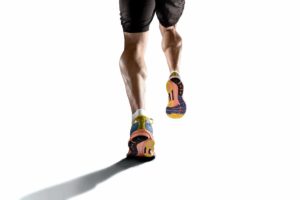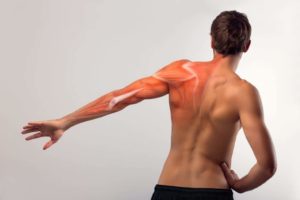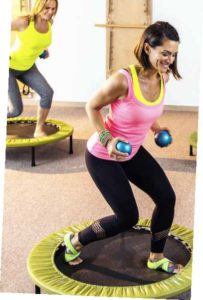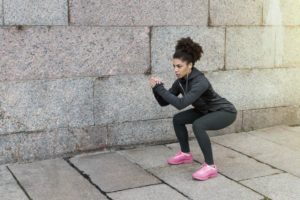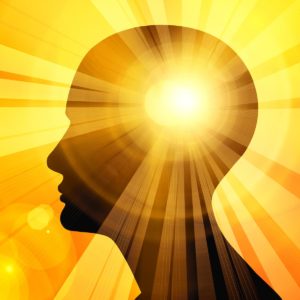Anatomy/Kinesiology
Learning About Lymph
Any routine visit to the physician includes the familiar cold-hands-under-the-earlobes lymph node check. But how often do you think about what the doctor is checking for or how important the lymphatic system is? And have you told your clients that physical activity plays a key role in supporting this crucial system?
Smoking and Musculoskeletal Injury Risk
Researchers have identified more reasons to quit smoking and to alert any clients who do smoke. A recent research review on smoking and musculoskeletal injury risk in military trainees found that for those who smoked, injury risk was 31% higher for men and 23% higher for women. The risk grew as smoking levels increased. For example, among the heaviest smokers, risk increased up to 84% for men and up to 56% for women.
Shoulder Blades: The Right Moves
The shoulder blades, or scapulae, are critical links in the kinetic chain from the waist through the shoulders, up to the neck and down to the fingertips. Abnormalities in the position or movement of the shoulder blades—technically called scapular dyskinesis—can trigger pain and discomfort, especially among people who spend long hours sitting and using computers.
Programming to Prevent ACL Injury
Your new client, 16-year-old Alexis, is a competitive athlete who wants you to design a fitness program that will help her prevent a second anterior cruciate ligament (ACL) tear. She partially tore her ACL while playing soccer and rehabbed it with a physical therapist, who cleared her to play again. Alexis returned to spring softball without an issue, but she would like to be as fully prepared as possible for the upcoming fall soccer season. She hopes to be recruited to play in college, but her parents are concerned she will sustain another ACL injury, perhaps a more severe one.
Range of Motion: Full or Partial?
Research shows there’s a time and place for both full and partial range of motion in resistance training program design.
Some training systems purposely use partial ROM for various exercises. Moreover, certain surgeries and orthopedic injuries require partial-ROM movements during rehabilitation (Pinto et al. 2012). It seems natural for personal trainers to wonder which is superior: full ROM or partial ROM? ,/p>
Two studies comparing the benefits of partial ROM and full ROM give a clearer view of the landscape.
Getting to the Bottom: The Ischial Tuberosity
The posterior aspect of the body, along with its muscles, tendons, bones and attachments, is easy to overlook because it’s out of sight and, therefore, often out of mind. Until, that is, pain occurs. The ischial tuberosity—also known as the “sit bones” or even “sitz bones” (from the German word sitzen) (Garikiparithi 2017)—has many different connections, although it is mainly associated with the hamstring muscles (Drake et al. 2010).
Exercise’s Impact on Cancer
There are three ways to look at battling cancer. For those who don’t have it, lowering risk is the primary goal. For those who’ve had it, successfully recovering and, of course, reducing the chances of recurrence are of utmost importance. For those who currently have it, the priorities are getting rid of it and minimizing the harmful effects that both the disease and the treatment have on the body. Exercise has been shown to help with all three.
Multiple Planes, Many Positions
Participants may have a love-hate relationship with your core routines, but there’s no reason why you can’t make things fun while helping people to move, feel and look better. Ideally, the core-training exercises you choose will hit multiple planes from many positions (supine, prone, side-lying, sitting, kneeling, standing) while also stabilizing the pelvis, spine and scapulae. This functional approach prepares the body for the rigors of daily life.
130/80 = High Blood Pressure
For the first time since 2003, the American College of Cardiology and the American Heart Association have produced a substantial report updating blood pressure recommendations. People with a reading of 130/80 are now classified as having high blood pressure. This is down from 140/90.
According to the ACC, this means 46% of U.S. adults will now be categorized as having hypertension.
Those in the “hypertensive crisis” category require medication intervention and immediate hospitalization if there is organ damage, according to the report.
The Achilles Tendon
Many fitness professionals have dealt with an Achilles tendon injury, either their own or a client’s. The largest and strongest tendon in the body, the Achilles connects the lower-leg muscles and calf to the heel. “Synchronous functioning” of the tendon and calf is crucial for many activities, including standing on tiptoe, running, jumping and climbing stairs (Bhimji 2016).
Dutch surgeon Philip Verheyen named the tendon (after the Greek hero Achilles) in 1693. Previously, it was known as “tendo magnus of Hippocrates” (van Dijk 2011).
The Anatomy of Functional Training Risks
Many clients can’t seem to get enough of workouts that meld functional movements with high-intensity resistance training. Indeed, workouts using dynamic, high-intensity, full-body movements are great for strength and health—provided the body functions properly and exercisers use correct technique.
The Pelvic Floor: Base Support & More
Does the pelvic floor get the props it deserves? Many fitness professionals who specialize in women’s health think it warrants more respect and attention. Trista Zinn, founder of Hypopressives in Toronto, says the pelvic floor is “overlooked and misunderstood by many.” She adds, “Our quality of life and athletic performance literally rest on [the pelvic floor’s] synergistic ability to function with the core as a whole.”
Some Cancers Are a Weighty Issue
About 40% of cancer cases are related to overweight and obesity, according to a new report from the Centers for Disease Control and Prevention.
Your Epidermis Is Showing!
Some anatomy geeks get a kick out of asking unsuspecting people to name the largest system or external organ in the body. The answer: The integumentary system, of course, which includes the skin, hair, nails, and sebaceous and sweat glands (Springhouse 2002). Its main function is to protect the body from “the outside world” (bacteria, for example), but it also eliminates waste products, regulates body temperature and retains body fluids (AAAS 2017).
Abdominal Separation and the Female Core
Imagine a balloon—a standard latex party balloon. You put a tiny seed in it. A watermelon starts to grow. You pick up the balloon with the watermelon growing inside. You carry it with you all day. You sit with it, stand up with it, run with it, take it wherever you go. What happens? How long will that balloon hold up?
Now imagine the same scenario with a stronger balloon, a Mylar balloon, with reinforced seams.
Getting Better at Recovery
A growing body of research is shedding more light on the importance of resting after exercise—providing vital clues on measuring and enhancing the recovery process. These insights are welcome news to personal trainers and coaches who see the consequences of overtraining and inadequate recovery every day. This column discusses some of the latest research on assessing and managing recovery and advises on tactics that may help your clients recover from exercise.
The Science of Yoga
“Jane,” like many clients, tried yoga to reduce her stress and anxiety, but she often held her breath during triggering moments, taxing her to the point where she’d feel faint and need to lie on the floor. After taking yoga sessions with Nicole DeAvilla, RYT 500, of Kentfield, California, Jane immediately felt calmer, more grounded and more optimistic.
Protecting the Aging Brain
Study after study shows that physical activity, diet and other lifestyle factors keep the brain healthy as we age—contrary to the popular notion that cognitive function inevitably declines in the later years of life.
A Fine Balance
No training program is complete without at least some focus on balance, an ability many people take for granted. We monitor the environment and our relationship to gravity quite automatically, thanks to the vestibular system, which helps us maintain our center of mass over a base of support. A properly functioning balance system allows us to see properly while in motion;
helps us orient ourselves to gravity;
determines direction and speed; and
makes automatic postural adjustments (Vestibular Disorders Association).
Shoulder Pain and Injury Prevention
Shoulder pain and injuries make it harder to exercise and play sports. Damaged shoulders also limit basic functions, impair quality of life and disturb sleep (Acton 2011). What’s more, research suggests that almost a quarter of your client base will experience shoulder pain/injury at one time or another (Ghosh 2012).
